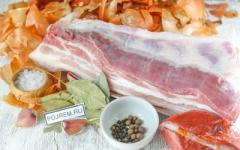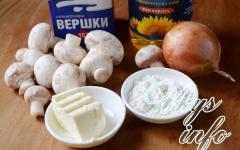Known to many as an aromatic and spicy seasoning, giving the dish a special taste and smell. It is also famous for its medicinal properties and is very actively used in. Pythagoras called it “the king of seasonings,” and the Slavs hung it in the house as a talisman against evil spirits and evil spirits. There are many legends about this amazing thing and its magical and healing properties.
The benefits and harms of dried garlic
It is rich in vitamins, minerals and acids, and has unique healing properties. It contains: potassium, magnesium, sodium, phosphorus, copper, iron, group of B vitamins, as well as other minerals and beneficial acids. A special feature of the vegetable is its aroma, which arises from the natural ester allicin, which has antioxidant and antiseptic properties. 
The beneficial properties of dried garlic include:
- promotes digestion. When this aromatic is added to dishes high in fat and meat, it enhances the process of digestion of such “heavy” food. By acting on the liver, it stimulates the production of enzymes for processing foods;
- lowers cholesterol levels, which settle on the walls of blood vessels and can cause high blood pressure;
- prevents the formation of blood clots;
- has a beneficial effect on the human body suffering from atherosclerosis. Under the influence of its complex of microelements, intravascular blood clots dissolve;
- suppresses the formation of cancer cells. As a result of research conducted by Israeli scientists, it was found that allicin, which is part of the composition, prevents the growth of cancer cells by neutralizing free radicals;
- has antiviral and antimicrobial properties. Phytoncides, contained in sufficiently large quantities, have a detrimental effect on staphylococci, bacteria, salmonella, E. coli and even diphtheria bacilli. It was used during wars as an antiseptic for treating wounds;
- in the female body it can increase estrogen levels;
- With long-term and regular use of this aromatic vegetable by men, they will stop worrying about problems with potency, their reproductive health improves, and it can also prevent inflammation of the prostate gland.
 could be like this:
could be like this:
- Excessive consumption of any food product can cause problems and negative effects on human health. Having studied the beneficial properties of the miracle vegetable, it is worth saying that you should not get carried away with eating it in excess; it should not exceed 2-3 cloves per day;
- there are contraindications in which its use must be strictly limited or completely abandoned: for diseases of the gastrointestinal tract such as gastritis, stomach ulcers, duodenal ulcers, pancreatitis; for liver problems, namely: hepatitis, nephrosis, nephritis;
- lactation. Since mother's milk has the taste of the foods that the mother ate before breastfeeding, and garlic has a very special taste and aroma, the baby may not like the milk and refuse to feed.
Which garlic is better to choose?
Almost all vegetables are suitable for it, but some may lose their taste as they lose moisture.  Still, it’s worth choosing varieties such as:
Still, it’s worth choosing varieties such as:
- Silver-white;
- Creole;
- Kirovogradsky;
- Starobelsky white;
- Ukrainian white;
- Southern purple;
- Bronnitsky;
- Kalininsky;
- Rostovsky.
How to prepare garlic for drying
If preparation for production takes place, then the entire process will consist of such stages, like: washing the product, pre-drying it, cutting it, and then the drying stage. The raw materials are placed in special equipment, where they are purified and then washed. After which it enters the pre-drying stage, for which the cleaned and washed cloves are placed in a centrifuge, which, spinning, removes all excess moisture after washing.
Important! You should not wash garlic before drying it at home, as it may become moldy.
Next, it is cut on a special machine and is ready for drying in a drying chamber using a reverse flow oven.  At home, garlic also needs to be prepared first. get rid of excess water. For this purpose, in households, before digging, they do not water it for several days and make sure that there is no rain the day before. And if you purchased garlic at the market and are not sure under what conditions it was dug, you need to lay it out on a flat surface to dry outside or on the balcony.
At home, garlic also needs to be prepared first. get rid of excess water. For this purpose, in households, before digging, they do not water it for several days and make sure that there is no rain the day before. And if you purchased garlic at the market and are not sure under what conditions it was dug, you need to lay it out on a flat surface to dry outside or on the balcony.
You can simply spread out the paper and let it lie spread out for a couple of days. It is worth noting that to preserve more beneficial properties, minerals and vitamins, drying in direct sunlight should be avoided.
How to dry garlic cloves for the winter
There are many ways to dry garlic for the winter. Some people prefer to do this without destroying the head; many people like to form the bulbs with dried tops into bundles resembling braids and hang them in the house. For many years, such garlic braids were considered to be a household amulet against evil spirits and evil spirits. But the most popular modern method is drying garlic cloves.
Naturally
Before starting the drying process, it is necessary to peel the garlic cloves.  To do this, you can use several culinary advice:
To do this, you can use several culinary advice:
- press on the head of garlic with the flat side of the knife, which will cause the head to disintegrate and the scales will begin to come off easily;
- You can also place the garlic head in a metal bowl, having previously processed it with a knife in the manner described above, cover it with another bowl and shake vigorously. When you open the bowl, the husks will lie separate from the perfectly peeled cloves.
After the garlic has been peeled, it must be checked for any darkened spots or damage. Then each clove is cut in half and laid out on a flat surface with the cuts facing up. It should be dried in a dry room with good ventilation or in the fresh air in the shade, so as to avoid direct sunlight. The drying process must be controlled by turning the raw materials over every few days. The results of drying in this way can be expected in a week or two.
In the oven
Drying garlic in the oven is not much different from a similar natural process, but, of course, it will not last two weeks. In the oven this process will go much faster and will take from 3 to 6 hours. To prepare, it is better to cut it into thin slices or slices, which will significantly speed up the process of removing moisture from the product.  It is important to know that a dried vegetable will retain all its beneficial substances and minerals even after changing its usual state. Next, you need to cover a baking sheet with parchment paper and place the garlic slices on it in one layer. The temperature in the oven should be low, about +50 °C, which will gradually remove moisture while preserving all the richness of the product. After placing the baking sheet in the oven, you will need to time it and check the condition of the garlic after 3 hours.
It is important to know that a dried vegetable will retain all its beneficial substances and minerals even after changing its usual state. Next, you need to cover a baking sheet with parchment paper and place the garlic slices on it in one layer. The temperature in the oven should be low, about +50 °C, which will gradually remove moisture while preserving all the richness of the product. After placing the baking sheet in the oven, you will need to time it and check the condition of the garlic after 3 hours.
The slices must be stirred periodically, allowed to cool slightly, and then put back into the oven, and ultimately tested for strength. If the garlic slice has become brittle and breaks, then the drying process is over; if it is flexible and soft, then drying should be continued. In order to create an influx of fresh air, the oven door can be opened slightly from time to time. If the oven has a convection mode, this will significantly improve the air exchange process.
Important! Garlic slices must be constantly monitored to ensure they do not burn or become too brown, otherwise the dried product will taste bitter.
In an electric dryer
The variety of household appliances pleases modern housewives and makes household work easier and more enjoyable. One of the processes that has received recognition from many housewives is drying vegetables in an electric dryer. Let's look at drying garlic in this machine.  In order to dehydrate garlic, you need to rid it of scales and husks and place it in one tier on a drying rack. After connecting the electricity, you need to set the temperature +50...+60 °C and start the process. It will also take from 3 to 6 hours, depending on the thickness of the slices and the power of the unit.
In order to dehydrate garlic, you need to rid it of scales and husks and place it in one tier on a drying rack. After connecting the electricity, you need to set the temperature +50...+60 °C and start the process. It will also take from 3 to 6 hours, depending on the thickness of the slices and the power of the unit.
How to make garlic powder at home
Once you learn how to dry garlic for seasoning, you can begin turning it into a flavorful spice. When the vegetable is well dried, has a pleasant golden color and its slices break well when pressed, you can begin the process of chopping it. To do this, you need to use either the bowl of a kitchen blender or a coffee grinder.
After placing the dried slices in the machine, grind them to a powdery state. Then it is necessary, armed with a sieve, to sift the resulting bulk mass and, if necessary, re-grind the remaining large grains and particles until a homogeneous fine powder is obtained. If you want to add larger particles of seasoning to your food in order to more clearly taste the garlic in the dish, you can avoid the sifting process. 
It turns out that garlic is an expensive pleasure. Its average market price is in no way inferior to expensive exotic vegetables and fruits. Many summer residents, knowing the unpretentiousness of the plant, try to grow and prepare the crop for wintering on their own. This means it’s time to learn how to dry garlic and determine the features of its storage.
It’s hard to imagine national Russian cuisine without garlic.
Features of harvesting
Well-dried soil is the key to successful garlic harvesting. As a rule, they stop watering the soil approximately 2-3 days before its scheduled collection. Garlic is simply pulled out (dug) out of the soil. At this point, the harvesting work can be considered completed.
Now you need to remove the topmost layer of husk to remove dirt and clods of earth. At the same time, the teeth cannot be completely exposed.
Important! It is prohibited to wash garlic after digging, otherwise there is a risk of ending up with a moldy product.
Methods for preparing garlic for storage
The plant dug up after full ripening is dried in several ways:
- in room
- outside in the sun
- in the oven
- in an electric dryer.
In this case, the garlic heads can be dried entirely, or you can process only the cloves. Let's consider all the methods.
Drying indoors
Place the garlic in a single layer in a dry, well-ventilated room. We do not trim the stems, leaves and roots. Ultimately, it is by their condition that we will be able to determine the degree of readiness of the cloves for subsequent storage. Drying time is about 1 month. Uniform, discolored and brittle leaves are a signal that the crop is ready for further processing.
The time has come to cut off the roots, leaving about 0.3 cm from the head, and also get rid of the tops, leaving about 3-5 cm from the stem.
We put the finished product in boxes and put it in the attic or basement for storage.
By the way, many people like to store dried garlic in bundles, similar to onions. How do you like this option?
Drying outside
There are no particular difficulties in drying garlic outside. The algorithm of actions is similar to that described above.- the harvested crop is not washed
- plants are laid out on a wooden or any other surface in one row
- During the drying process, the garlic is turned over and put away indoors at night (in case of unexpected precipitation).
- dried stems and roots are cut off, maintaining a ratio of 3-5 cm and 0.3 cm
- The garlic is put into the pantry or other place prepared in advance for its storage.
Oven drying
Housewives have gotten used to drying garlic in a regular oven. They suggest the following method:
- garlic cloves are peeled, washed, cut into plates (petals) about 1 mm thick
- cover the baking sheet with cling film or foil
- Place chopped garlic on the prepared surface in 1 row
- place the baking sheet in the oven for half an hour, setting the temperature to 50°C.
After the specified time has passed, the cooled dried garlic is placed in a container with an airtight lid.
Important! You must constantly monitor the product being prepared, otherwise it will burn out and acquire an unsightly brown tint.
Garlic in an electric dryer
Preparing aromatic spices for the winter can be done using an electric dryer. The cloves are first peeled, cut into rings or half-slices and placed on electric dryer trays with the cut side up. The heat treatment time of the product takes on average 5 – 18 hours and depends on the type of household appliance.
To obtain granulated garlic or powder, the dried petals are ground using a coffee grinder.
Advice: do not make powder preparations for more than 1 month. This seasoning quickly cakes and becomes unsuitable for consumption. Store garlic in slabs and grind into powder only when necessary.
How to remove garlic skin without hassle?
This question is irrelevant for those who peel no more than one head, for example, for salad. However, when preparing garlic for the winter, you will have to peel more than one kilogram. If you consider that with 2.5 kg of raw materials, on average, up to 0.5 kg of dried garlic is obtained, then a lot of effort and time will have to be spent on preparatory work.
Plain water will help make the cleaning process easier. The cloves should be soaked for 20-30 minutes, after which, without harming your fingers, remove the softened skin with a knife.
And finally, about ready-made spices
Some housewives prefer to dry garlic along with other vegetables. The result is a ready-to-use seasoning, for example, for pizza.
First, cut into thin rings washed tomatoes of “not juicy” varieties such as “Cream”. If necessary, remove the watery core. We send the cuttings to the electric dryer. As the tomatoes dry out, add garlic and basil to the free space. Pour completely dried vegetables and herbs, along with garlic, into a jar with an airtight lid. Some of the pizza filling is ready.
To conclude the topic, we suggest you watch the video, which describes in detail one of the methods of drying garlic in an electric dryer:
All materials on the website are presented for informational purposes only. Before using any product, consultation with a doctor is MANDATORY!
You can say about garlic the same way as about onions - it is “from seven ailments.” But garlic not only helps to avoid many diseases and cure existing ones, but is also a vegetable that improves the taste of a dish and increases appetite.
Garlic can be stored well at home. But if there is a lot of it, for example, you have your own garden with a garlic bed, but there is nowhere to store it (although there may be other reasons), then the garlic can be dried. After all, this is not such a labor-intensive process as it seems at first glance. Dry garlic also takes up little space and is very convenient to use.
How to prepare garlic for drying
The following varieties of garlic are suitable for drying: Kirovogradsky, Starobelsky White, Southern Violet, Bronitsky, Ukrainian White, Kalininsky, Rostovsky, Creole and others.
If you are harvesting your own garlic, do not water it for several days before digging it up, since the soil must be completely dry. For the same reason, they do not dig immediately after rain.
The garlic must be ripe. This is evidenced by the leaves themselves, which turn yellow and fall to the ground.
If you dig up garlic that is not yet fully ripe, its bulbs will be loose and loose. They will be poorly stored and dry.
But overripe garlic is also not very good, since when it is dug up, the scales are easily separated from the heads, as are the cloves themselves. This makes further processing difficult. After all, the cloves can become stained with soil, and it is not recommended to wash garlic that is going to be dried. Such garlic will take a very long time to dry and may simply become moldy and spoiled.
Only healthy, clean, undamaged and fully formed garlic is suitable for drying.
Garlic is dried by taking it into pieces, cutting it into slices, or making powder out of it.
How to dry garlic in a bunch
Immediately after digging, the garlic needs to be dried. Primary drying is carried out directly in the field. To do this, it is pulled out of the ground and left to lie there for several days. During this time, the tops and roots will dry out and the garlic will ripen. The scales will also dry out and press tightly against the bulb. In rainy or cold weather, drying is carried out in a warm room at a temperature of about 30°C for six to eight days.
When the tops dry, they are cut off, leaving a small stump. But most often, garlic and tops are braided into braids and hung by them in a dry, cool room.
How to dry garlic without destroying the bulbs
Garlic is peeled from the upper hard scales without destroying the bulb itself.
Then the garlic is cut into pieces 5 mm thick.
Place on sieves or baking sheets lined with parchment and dry in an oven or oven at a temperature of about 50°C. To avoid steaming or uneven drying, the garlic should be stirred periodically.
Garlic can also be dried in the sun, spread out in a thin layer. But this method is inconvenient because you need to make sure that moisture from rain or dew does not get on the garlic.
Garlic is considered dried when the slices no longer bend and break easily.
The crushed garlic is well cooled by placing it on a cloth or on the same sieves.
The garlic is then winnowed by hand to separate the slices from the flakes.
Ready garlic is packaged in boxes, paper bags, hermetically sealed glass jars and stored in a dry, dark, cool room for about a year.
How to dry already peeled garlic
Garlic heads are disassembled into cloves and completely peeled. The root collar of the cloves is cut off. Check that the cloves are free of damage and brown spots.
Some people advise grating the garlic, but this method releases a lot of juice, which makes drying the garlic almost impossible. You can chop the garlic using a food processor, but the slices should not be very wet. Therefore, the best cutting method is still manual. That is, armed with a sharp knife, the cloves are cut into thin slices and immediately laid out on a baking sheet covered with parchment.
This garlic is dried in an oven or electric dryer at a temperature of 50-60°C.
The chopped garlic is periodically stirred with a spatula and ventilated, occasionally opening the door. This must be done so that the raw materials do not steam and dry evenly. Drying continues for several hours.
Method 2. Garlic is disassembled into cloves, peeled and the root collar is cut off. The cloves are cut in half. They are laid out in one layer on a baking sheet lined with parchment, cut side up. Dry in an oven or oven in the same way as in the previous case.
The drying time depends on the quality of the garlic, the degree of grinding, the drying temperature and the choice of drying unit.
Ready dried garlic breaks easily.
It is cooled in air and packaged in paper bags or hermetically sealed glass jars.
How to Make Garlic Powder from Dried Garlic
Well-dried and cooled garlic slices are ground in a coffee grinder or blender until powdered. Then sift through a sieve so that the resulting powder is homogeneous. You can chop the garlic to coarse crumbs, then the prepared topping will taste good in the dish.
If the garlic cloves do not chop well, it means they are not dried enough. You need to additionally dry them in the oven, cool again and grind.
Store garlic powder in glass, well-closed jars. Shelf life is about a year.
Dried garlic: the healing properties of the beneficial components included in its composition, can excessive consumption of the product cause harm. Recipes for dishes that complement spices best.
The content of the article:
Dried garlic is the dried and crushed root of a perennial plant of the same name from the Allium family. The birthplace of culture is Central Asia. Since ancient times, it has been valued for its exceptional taste and healing effects on the body. There is handwritten evidence according to which the Egyptians made 22 medicines based on dried garlic to treat various ailments. Today it is used mainly as a spice. It is added to recipes for a variety of dishes all over the world. In our country, garlic is very popular, both fresh and dry, but we are far from the world leaders in eating the plant - in Italy, China and Korea, each resident eats about 8-12 cloves per day.
Composition and calorie content of dried garlic

Many people believe that dried garlic does not retain nutrients. However, if you perform the drying procedure correctly, observing the temperature regime, most of the elements useful and necessary for the human body will be preserved.
Calorie content of dried garlic is 331 kcal per 100 g of product, of which:
- Proteins - 16.55 g;
- Fats - 0.73 g;
- Carbohydrates - 72.73 g;
- Dietary fiber - 9 g;
- Water - 6.45 g;
- Ash - 3.54 g.
- Potassium - 1193 mg;
- Calcium - 79 mg;
- Magnesium - 77 mg;
- Sodium - 60 mg;
- Phosphorus - 414 mg.
- Iron - 5.65 mg;
- Manganese - 0.979 mg;
- Copper - 533 mcg;
- Selenium - 23.9 mcg;
- Zinc - 2.99 mg.
- Vitamin B1 - 0.435 mg;
- Vitamin B2 - 0.141 mg;
- Vitamin B4 - 67.5 mg;
- Vitamin B5 - 0.743 mg;
- Vitamin B6 - 1.654 mg;
- Vitamin B9 - 47 mcg;
- Vitamin C - 1.2 mg;
- Vitamin E - 0.67 mg;
- Vitamin K - 0.4 mcg;
- Vitamin RR, NE - 0.796 mg;
- Betaine - 6.1 mg.
- Arginine - 3.365 g;
- Valine - 0.667 g;
- Histidine - 0.263 g;
- Isoleucine - 0.414 g;
- Leucine - 0.728 g;
- Lysine - 0.768 g;
- Methionine - 0.111 g;
- Threonine - 0.374 g;
- Tryptophan - 0.121 g;
- Phenylalanine - 0.525 g.
- Omega 3 - 0.012 g;
- Omega-6 - 0.165 g;
- Saturated - 0.249 g;
- Monounsaturated - 0.115 g;
- Polyunsaturated - 0.178 g.
Beneficial properties of dried garlic

Healers from many countries wrote about the healing abilities of the plant in ancient times. Its unique beneficial properties are still recognized today. Garlic, including dried garlic, is included in many medicines. It is valued primarily as a natural antibiotic, and the fact that the plant can effectively fight bacteria was scientifically proven by Louis Pasteur in the 19th century.
In addition, garlic is an excellent antiseptic due to the presence of phytoncides and a source of antioxidants due to the content of allicin in the essential oils of the plant.
Let's look at the beneficial effects of the plant in more detail. The benefits of dried garlic include the following positive effects:
- Preventing the development of inflammation. The above-mentioned phytoncides actively fight pathogenic flora, preventing inflammatory processes of one nature or another. They are capable of killing a wide range of viruses, bacteria, fungi, etc.
- Strengthening the cardiovascular system. The positive effect of dried garlic on the heart is to increase the force of contractions, as a result of which it conserves resources, but at the same time functions more efficiently. The benefits for blood vessels are explained by preventing the formation of cholesterol and preventing atherosclerosis. Consumption of spices protects blood vessels from damage, which in turn reduces the likelihood of developing thrombosis. Garlic also dilates blood vessels, thus preventing a hypertensive crisis.
- Prevention of respiratory diseases. The spice has a particularly beneficial effect on the mucous membranes of the respiratory tract, preventing the development of colds. The plant is used not only for prevention, but also for the treatment of bronchopulmonary diseases, due to the effective relief of inflammation and due to its ability to dilute sputum and promote its separation.
- Prevention of cancer development. Garlic can fight the development and growth of tumors thanks to allicin - it is a powerful antioxidant and prevents the formation of free radicals.
- Increasing the body's immune forces. Of course, a spice so rich in beneficial components cannot but have an overall positive effect on the immune system. Regularly adding dried garlic to dishes will help you avoid getting sick during flu and ARVI epidemics.
- Normalization of the gastrointestinal tract. The enzymes contained in the spice stimulate metabolic processes, help the digestive system digest food more efficiently, absorb beneficial substances and remove harmful ones. The product also has a positive effect on intestinal motility and helps fight intestinal disorders.
- Prevention of liver diseases. Garlic has choleretic properties, due to which bile is promptly removed from the body, facilitating the functioning of the liver. The choleretic effect also prevents the formation of bile clots and stones.
- Beneficial effect on the functioning of the gonads. The spice plays the role of an aphrodisiac, activating the work of both the female and male sex glands. In addition, some of the beneficial substances are excreted in the urine, which helps disinfect the genitals and prevents the development of specific infections.
- Brain stimulation. Garlic has a beneficial effect on brain activity, which is especially important for older people. Regular consumption of the spice prevents brain degradation and senile dementia.
- Preventing premature aging. The presence of antioxidants in garlic not only helps prevent the development of tumor processes, but also helps prevent early aging.
- Prevention of vitamin deficiency. The presence of vitamins in garlic protects the body from their deficiency.
Harm and contraindications to dried garlic

Unfortunately, even such a healthy product as dried garlic can harm the body. Anyone should not abuse this spice. Garlic contains a lot of really powerful biologically active substances, most of them are beneficial, but there are also some that can lead to adverse effects if not observed in moderation. When overeating spices, a person may experience a headache, become distracted and inattentive.
In addition, there is a group of people who are not allowed to consume garlic in any quantity or who are advised to strictly dose its use. Among these people:
- Suffering from severe diseases of the stomach, liver and kidneys. The spice irritates the mucous membranes and can cause an exacerbation of the disease.
- Epileptics. Garlic can trigger an attack.
- Pregnant and lactating women. Some components included in the product may adversely affect the fetus. During lactation, the spice is prohibited, since the baby may be allergic to garlic, which in small quantities will certainly pass into breast milk.
- Suffering from other serious illnesses. Among them are anemia, diseases of the genitourinary and cardiovascular systems. Let us repeat, garlic is a strong product in all respects, and therefore, if you have a particular disease, consult your doctor before consuming it.
There are studies according to which garlic is a poisonous plant due to the presence of so-called sulfanyl-hydroxyl ions in it. It is considered toxic to the entire body and has a particularly negative effect on the brain. The authors of the study assure that the product should not be consumed even in small doses. However, the official point of view so far is this: only the abuse of garlic can lead to negative consequences, but in moderate doses, the product, on the contrary, is extremely beneficial.
Recipes with dried garlic

Garlic has a special place in cooking. In any form, it is one of the main spices of Mediterranean cuisine. This spice is also loved in South and East Asia, the Middle East and North Africa. However, using dried garlic in recipes is a common practice all over the world. There are many signature dishes with spice.
In dried form, garlic is especially good when added to soups, hot dishes of meat and vegetables, as well as sauces. Let's look at some great recipes:
- Homemade chicken sausages. Grind chicken fillet (250 grams) in a blender or pass through a meat grinder. Mix spices: paprika (1 teaspoon), thyme (1 teaspoon), black pepper (0.5 teaspoon), dried garlic (0.5 teaspoon). Add all the spices to the minced meat and mix. Add grated cheese (150 grams) and mix again. Form small sausages from the minced meat, roll them first in cornstarch, then in beaten egg and finally in breadcrumbs. Place in the freezer for 2 hours. Fry in a frying pan until done.
- Festive potato side dish. Cut the potatoes into very thin slices (1 kg), place in a bowl. Add spices: dried garlic (1 teaspoon), thyme (1 pinch), pepper and salt to taste. Next, add melted butter (2 tablespoons) and vegetable oil (2 tablespoons), as well as grated cheese (50 grams). Mix everything well. Take a muffin tin and stack the herbed potato slices into the “well” for each muffin. Bake at 220 degrees for 40-50 minutes. You should get some kind of potato nests; you can serve them in portions.
- Zucchini chips. Cut zucchini (500 grams) into slices and add salt. Mix breadcrumbs (150 grams) and spices - dried garlic (0.5 teaspoon), suneli hops (1/3 teaspoon). Dredge the zucchini in flour, then in beaten egg and finally in spiced breadcrumbs. Place on a baking sheet and cook in the oven for 15 minutes at 200 degrees, then turn over and cook for another 15 minutes. It is best to eat zucchini chips with a sauce made from sour cream and chopped fresh garlic.
- Barbecue sauce. Pour your favorite ketchup (250 grams) into the pan; you can replace it with tomato paste, slightly diluted with water. Add sugar (2 tablespoons), vinegar (2 tablespoons), honey (1 tablespoon), mustard (1 teaspoon), a pinch of spices: dried garlic, onion, celery, paprika, black pepper and salt. It would be ideal to also add Worcestershire sauce (2 tablespoons), but finding it in our stores is not so easy. Place the future sauce on low heat and cook after boiling until thickened - 10-15 minutes. If the sauce does not thicken, add a little starch.
- Lentil soup. Pour lentils (100 grams) with water (2 liters), bring to a boil and cook for 20 minutes. Cut the potatoes (3 pieces), onion (1 head) and celery stalk (1 piece) into cubes, grate the carrots (1 piece). Fry all prepared vegetables, except potatoes, in a frying pan. Add all ingredients to lentils, cook for 15 minutes. Add dried garlic (1 teaspoon), soy sauce (1 tablespoon), lemon juice (2 teaspoons), salt and pepper to taste. Cook for a couple more minutes.
Note! Dried garlic should be added to all dishes 2-3 minutes before cooking, so as not to lose all the beneficial components during heat treatment.

Indians began cultivating garlic in ancient times, but for a long time it was used purely as a component of medicines. The plant was not used in cooking because the smell was too pronounced.
The ancient Egyptians believed that people engaged in heavy physical labor must eat garlic regularly. The spice was present in the diet of the builders who were engaged in the construction of the pyramids.
There is reason to believe that ritual significance was also attributed to garlic in Egypt. During excavations in the tombs of the pharaohs, archaeologists repeatedly discovered cloves of garlic in front of noble people.
Garlic is even mentioned in the Bible. And, again, the mention is associated with Ancient Egypt, or rather with a description of the diet of its inhabitants, according to which they ate a lot of garlic and onions.
In Korea and Japan they prepare an unusual dish - “black garlic”, which is obtained by preserving the cloves using a certain technology. This garlic has a sickly sweet taste.
In Slavic mythology, spices were credited with magical properties. It was believed that it helps drive away evil spirits and witches, as well as diseases. In the south of Russia there was a belief that garlic must be tied into the bride’s braid to ward off damage.
There is an interesting legend about the plant in Ukraine. It is believed that it grew from the teeth of an evil witch, and therefore eating it is a sin. And, nevertheless, traditional Ukrainian borscht cannot do without this spice.
In 1998, a garlic festival was established in the United States, which is still held today. All funds are transferred to the children's fund to combat mental disorders.
In 2009, when the swine flu epidemic was raging in China, someone spread a rumor that garlic could help treat it successfully. Thanks to this gossip, prices for fragrant cloves increased almost 40 times.
Watch a video about dried garlic:
Garlic is a unique product both in the culinary world and in folk medicine. Its bright taste and aroma have given it a reputation in the kitchens of all countries of the world, and its many beneficial properties have made it a favorite of people who prefer to be treated with traditional methods. At the same time, there are studies according to which garlic is poisonous and should not be eaten even in small doses, but the studies have not yet been officially recognized.
Since dried garlic cloves are a flavorful seasoning for soups, seafood, meat and poultry, many people are interested in how to dry garlic at home? There are several proven ways to properly dry garlic yourself so that it does not lose its taste and beneficial qualities. Today you will learn about preparing the product for drying, drying without damaging the integrity of the bulbs, in a bunch, storing in powder form, and whether garlic can be dried in the sun.
You can use vegetables of the Kalininsky, Rostovsky, Kirovogradsky, Starobelsky White, Creole, Southern Violet, Ukrainian White and others varieties. In principle, any of the varieties known among gardeners can be dried. A few days before the planned digging, you should stop watering the crop. Since the soil must be dry, it is not recommended to dig up the plant after it has rained. Don't wait for the garlic to ripen. At this point, the foliage becomes characteristically yellow and is located on the surface of the ground.
In the process of digging up a vegetable of this degree of maturity, both the scales and the teeth themselves will inevitably be easily separated from the heads. They can get dirty with soil. It is forbidden to wash the teeth, as they can become moldy. It is also not recommended to dig up an unripe crop. Since its bulbs will have a loose and loose structure, which will make them difficult to dry and store. Garlic should be dried in a cool, dry place. Do not remove the roots, leaves and stem.
Many people practice drying this wonderful product, knowing about all its beneficial qualities.
Garlic improves immunity, exhibits antibacterial and antiviral properties, reduces bad cholesterol, reduces the risk of heart attack and stroke.
But it also effectively fights worms, helps treat joint pain, and is used as an adjuvant in the treatment of liver diseases.
It is an excellent prevention of impotence in men and diseases of the cardiovascular system in any person.
Drying in a bundle
How to dry garlic in a bunch? Its preliminary drying is carried out directly on the site. After digging it up, it is left there for a couple of days. After the roots and tops have dried and the scales have become more closely attached to the surface of the bulb, you can harvest the crop from the area. If there are cold and rainy days this year, the drying procedure should be carried out in a room with a temperature of +30 degrees and last no longer than 8 days. It is customary to braid garlic with tops into braids, which are hung in a dry place where it is somewhat cool.
After digging up mature garlic, you can dry its heads without chopping them. It is required to allocate a room for the product with a temperature of no more than + 10 degrees. Next, the garlic should be laid in 1 layer for several months. The roots should become shriveled and the leaves should change color to brown. It is necessary to remove some foliage and trim the roots. The stem should be cut at a height of about 2.5 cm from the head. Garlic is stored in this form in stockings. A dark and dry place is suitable.
You can dry the vegetable peeled. It is required to sort clean and mature product. After removing its top layer, the garlic should be cut into plates about 6 mm thick, spread on a sieve or baking sheet, after laying it with parchment paper. Next, drying is carried out in the oven or oven at a temperature of +50 degrees. Checking whether the slices have dried properly is not so difficult. Just bend one in your hand and it should break.
Dry garlic can be used to make aromatic powder. The product must be ground using a coffee grinder. This powder will not lose its smell and taste for 1 year. How to do it? To do this, good heads are selected and the husks are removed from them. You can grind it not only with a coffee grinder. Some people like to finely chop the garlic themselves, while others use a food processor. Drying in an oven with the temperature setting at + 93 degrees is required.
Sometimes this procedure is carried out in a special dehumidifier. Where the product is placed for 2 days at a temperature of about +35 degrees. By chopping dried garlic and passing it through a sieve, you can store the powder for about 2 months.
Can it be dried in the sun?
You can dry garlic in the sun if this is necessary to obtain a large amount of product during the season and sell it.
This method cannot be called justified for self-drying. Since laying the vegetable out in the sun significantly reduces its shelf life in the future. Under the influence of scorching sunlight, the top layer of the vegetable cracks. Which does not have the best effect on the quality of the bulbs.
If you still want to use this method, place the dug garlic in the shade. Then its taste and aroma will not be affected. And you can add your favorite seasoning to various dishes to suit your taste and enjoy their unique taste. It is also recommended to dry in the sun those plants that you plan to plant before winter. This should be done within 3 days.
Video “Drying garlic”









